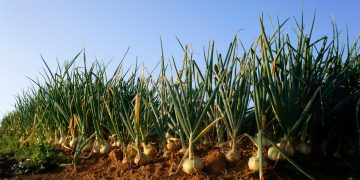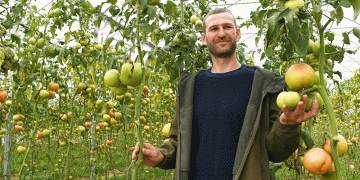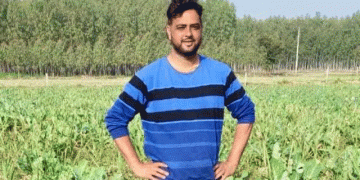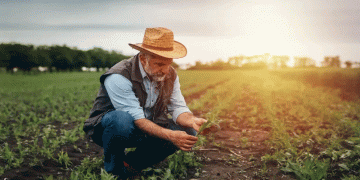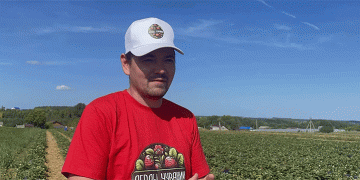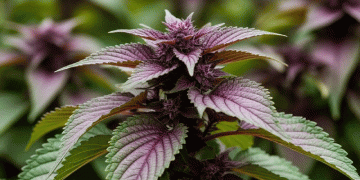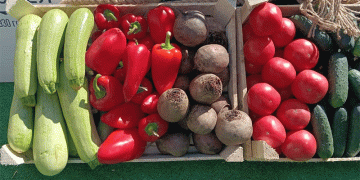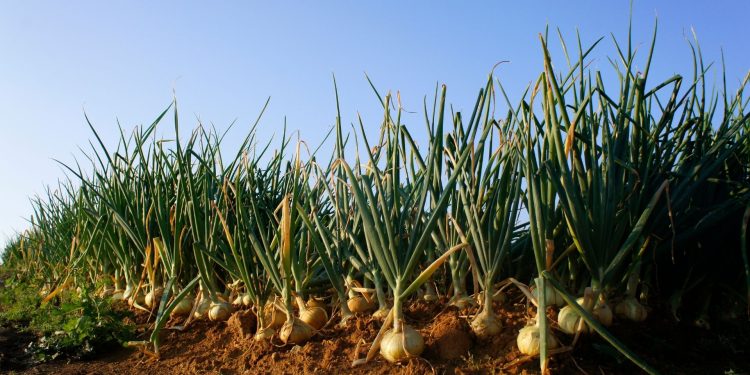Onion Farming Techniques, Tips, and Ideas.
Onion is one of the most favorite vegetables for most of the people all over the world. Growing onions is very easy and profitable. Investment required for growing onions on a commercial scale is very less and plant care of onions are also very minimal. So, today, we learn the top onion farming techniques, tips, and ideas.

Suitable Soil for Onion Plantation:
Onions can be cultivated in a wide range of soils from sandy loam to clay loam with good drainage facilities. The optimum pH would be 6.5-7.5.

Suitable climatic conditions for Onion growth:
It is adapted to a temperature range of 13-24° C for the vegetative stage and 16-21° C for the bulbing stage, 30-35° C at maturity and harvest. The best performance can be obtained in mild weather without the extremes of cold, heat and excess rainfall.
| Season | Kharif Season | May-September | (Onion only) |
| Late Kharif Season | August – February | (Onion only) | |
| Rabi Season | October – April | (Onion and Garlic) |
Onion seed rate per hectare:
7 to 9 kg/ha.(Note: 1 ha = 2.48 acres).
Nursery raising of Onion seedlings:
Seeds are sown on raised beds of 1.2 m width and 3-4 m length. The seedlings will be ready for transplanting in 45-50 days after sowing.
Preparation of soil or field for onion plantation:
Plow the land to get fine tilth and incorporate FYM 20 tonnes/ha or 10 tons FYM and 5 tons poultry manure or vermicompost at the time of the last plowing. Form flatbed or broad-based furrow (BBF) for planting.
Spacing: 15X10 cm for both
| Fertilizers | kharif season Onion | 100:50:50:50 kg NPKS/ha |
| Late kharif Onion | 150:50:50:50 kg NPKS/ha | |
| Rabi season Onion | 150:50:80:50 kg NPKS/ha | |
Apply 50% N and 100% P, K & S as basal dose and remaining 50% of N to be applied in two splits at 30 & 45 days after transplanting. The topdressing must be completed before bulb development.
Read: Strawberry Farming Project Report.
Irrigation requirement for Onion crop:

Irrigation is necessary at the time of transplanting/dibbling of cloves and light irrigation should be done on the third day after planting and subsequent irrigation will be done at 7-10 days interval depending upon the soil condition and season. Water the transplants immediately after planting. Because of the shallow root system, onions require frequent furrow irrigation. Avoid overhead irrigation, which causes foliage diseases. If the foliage has an unhealthy, yellowish tint the plants are being over-irrigated. The soil will be overly dry around an under-watered crop and may become cracked. Onions generally require 30″ of irrigation during a growing season and the closer to harvest, the greater the need for water. If the onion does not get enough water it will not make a large bulb. When the necks start falling over and the onions mature, watering should be discontinued and the soil allowed to dry.
Microirrigation and fertigation for Onion crop:
By using drip and sprinklers, irrigation should be done once in three days. The operating pressure for a drip system is 1.5kg/cm2 and for the rotary micro sprinkler is 2.5kg/cm2. Through drip, fertigation should be done by using nitrogen fertilizers (Urea). Apply 50% N as basal dose and remaining 50% of N to be applied in seven splits (10 days interval up to 70 days after transplanting) through the drip irrigation system.
Weed control and management of Onion plantation:
The crop should be kept weed free for good bulb yield. For the transplanted onion, pre-emergence application of Oxyfluorfen (Goal) @ 0.15-0.25 kg ai/ha or Fluchloralin (Basalin) @1.0kg/ha or Pendimethalin (Stomp) 3.5 l/ha combined with one hand weeding was found effective in both Kharif and Rabi seasons.
For onion nursery and direct seeded crop, application of Pendimethalin @3ml/liter just after sowing is found best in controlling weeds without affecting the germination, seedling growth, and final stand.
Cropping rotation in Onion Production :
Crop rotation is very important in onion farming process Soybean in Kharif season followed by onion in rabi season is the best crop rotation which improves soil fertility as well as monetary returns.
Harvesting, yield, and storage of Onions:

Onions should be harvested at 50% neck fall stage. Follow harvesting of onion bulbs at the right stage of maturity. It is important in deciding the storage life of onion as bulbs may be stored for about six months.

The onion bulbs, reach maturity when the plants cease to produce new leaves and roots. In onion, neck fall is the indication of maturity. Time of harvesting depends on several factors tike planting season, cultivar, market price and condition of the crop. In general, when about 50% neck fall is seen crop is harvested. Onion for storage should be fully developed. Thick-neck bulbs which result due to premature harvesting do not store well. Late harvesting leads to increased respiration, subsequent susceptibility to diseases and excessive sprouting during prolonged storage and left in field sunburn is also noticed. Bulbs are harvested by hand pulling if the soil is light; they are also harvested by hand implements. Kharif crop, since the growth continues forced toppling should be taken up to stop growth 15 days before harvesting. Onion along with tops are kept in the field for 2-3 days, curing for 3-4 days is necessary to remove excess moisture from outer skin and neck to reduce shrinkage and development of color in storage.

| Yield: | Onion (Kharif) | 15-20t/ha |
| Onion (Late Kharif) | 30-35t/ha | |
| Onion (Rabi) | 25-30t/ha |
Marketing of Onions:
Marketing is very easy, where you can supply to local wholesale stores or retail stores or even you can sell in government market yards.
That’s all folks about the ing of onions and the cultivation practices. Keep growing onions for better world!.
Read: Hydroponic Growing System.
